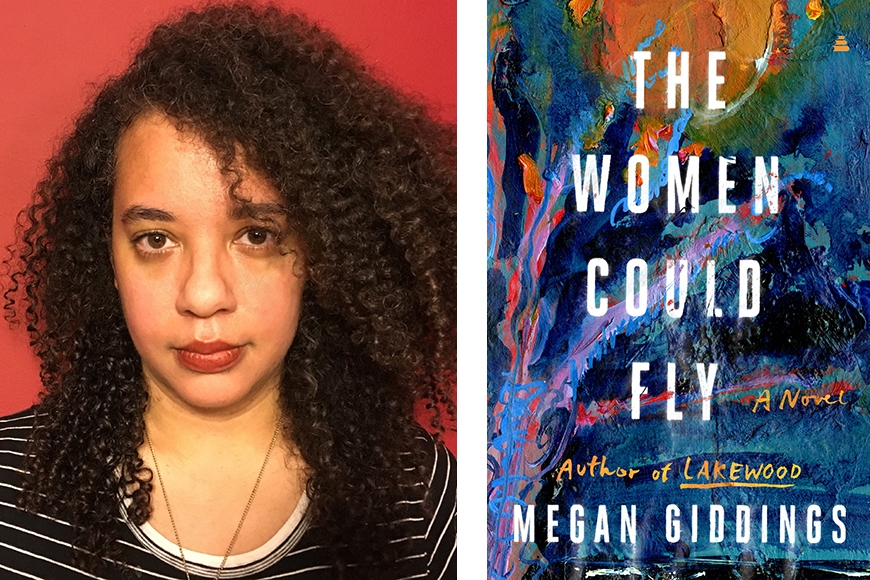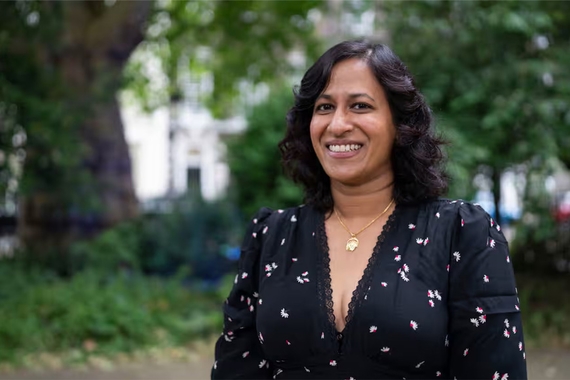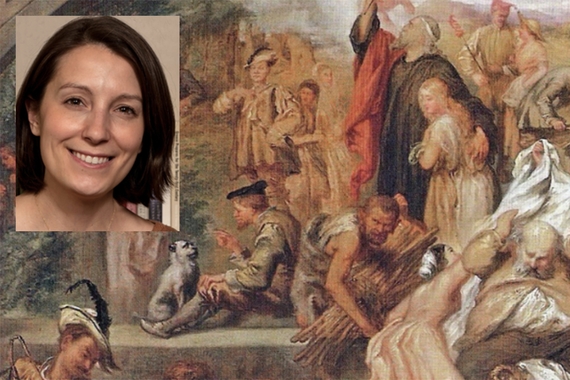Meet Assistant Professor Megan Giddings
Fiction writer Megan Giddings, who joined the Creative Writing Program faculty this year, is looking forward to 2023 for a "novel" reason. "Next year will be the first year where students I've taught will be having their first books published," says Giddings. "It's going to be really meaningful to me to be able to go to Moon Palace and see their books on the shelves."
Not that 2022 was lacking for excitement. In August, Giddings published her second novel, The Women Could Fly (Amistad), and in September she flew to New York and talked about the book with Seth Meyers on Late Night. The Washington Post in December featured the novel on its "9 Best Science Fiction and Fantasy Novels of 2022" list, as did Vulture on "Best Fantasy Novels of 2022."
Giddings' 2020 debut Lakewood was a Best Book of 2020 at New York Magazine and NPR, nominee for two NAACP Image Awards, and finalist for the 2020 LA Times Book Prize's Ray Bradbury Prize for Science Fiction, Fantasy, and Speculative Fiction. An essay by Giddings appears in The Lonely Stories, edited by Natalie Eve Garrett (Catapult, 2022). In 2018, Giddings was a recipient of a Barbara Deming Memorial fund grant for feminist fiction. She holds an MFA from Indiana University-Bloomington and served as visiting assistant professor of Creative Writing at Michigan State University. She generously answered our questions, below.
What are you currently writing and/or researching?
I'm currently writing my third novel. I'm reading the following books as research at the moment: Freedom Dreams by Robin D. G. Kelley; a lot of pulp paperbacks from the '60s and '70s about unexplained phenomena; and library books about mediums and automatic writing and spirit art. (The latter is one of the phrases people use to say that they've made an art piece in a trance state, where they feel a spirit was working through them.)
What courses have you most enjoyed teaching?
I've most enjoyed teaching advanced creative writing workshops. At the previous institutions where I've taught, there have been times where that class would be my third class with undergraduate English majors. It was always really meaningful to me to be able to see and hear how much they had grown as writers and thinkers during their undergraduate career. I'm looking forward to having similar experiences here at Minnesota!
What is your favorite work to teach?
I've taught Leah Johnson's Rise to the Sun twice recently. It feels a little unorthodox because it's a contemporary YA novel, yet I teach it because it shows how a book that on a surface looks fairly uncomplicated can do much from having dual protagonists with distinct voices and a tight container (the entire novel's narrative present is a long weekend at a music festival). The novel is also good at showing how and when moving into flashback can add narrative momentum. Students in the grad and undergrad levels are always initially skeptical of it, and then the mixture of humor and structural complexity usually wins them over.
Advice for current English majors and minors?
Make friends with your fellow writers. Writing can be wonderful, but it can also be hard and lonely. The friends I made in undergraduate creative writing classes, especially workshops, are people I still talk to and hang out with and share work with. Before I was a professor, before I had a book or even an MFA, they were my main writing community.
Favorite movie or TV show of past year?
Southside.



